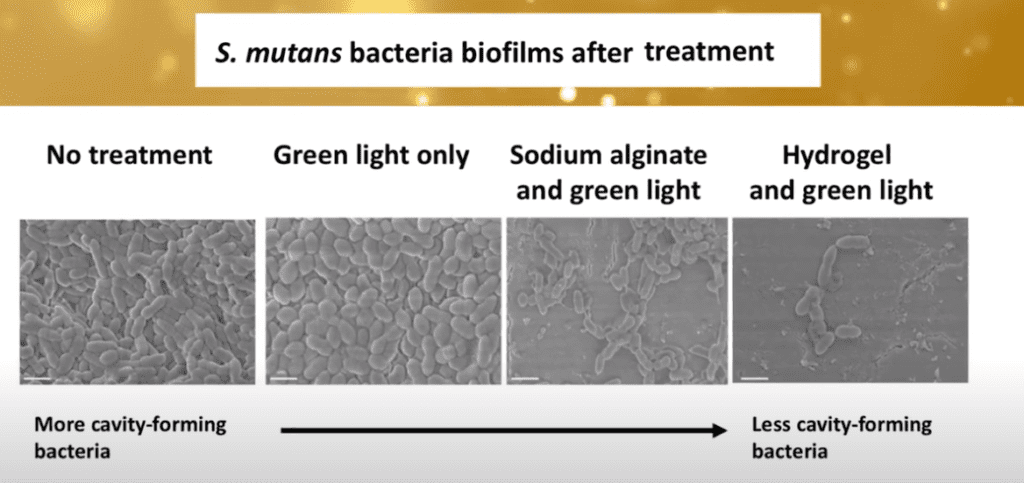Most toothpaste (and other oral care products) focus on the prevention of caries and periodontitis, but increasingly, a large number of products emphasize teeth whitening. While not technically a health problem, teeth whitening has become increasingly important, but brushing your teeth and flossing doesn’t really help with whitening. Also, some whitening treatments can carry risks as they generate reactive oxygen species that can break down enamel.
With this in mind, a team of researchers at Nanchang University in China has developed a new gel that can whiten teeth without the risks.

Our teeth consist of a mineral called hydroxyapatite. Pure hydroxyapatite is white or colorless, which is also the case for many of the integrated proteins and minerals in our teeth. As a result, enamel is also white (and a bit translucent) — or that’s how it should be. Because of all the chemical and mechanical processes that take place in our mouth, the enamel can become thinner and the overall tooth color can turn darker.
“Furthermore, the “natural” white color of teeth is often compromised due to stains resulting from wine, tea, coffee, smoking, etc,” write the authors of a 2019 review of teeth whitening. “Whitening formulations for home use (e.g., toothpastes in combination with toothbrushes) and professional use in the dental practice (e.g., bleaching or professional dental cleaning) try to address this problem.”
To address this, people are increasingly turning to either dentists or at-home solutions. Most doctors agree you should never do any at-home treatment before first consulting with a dentist, and even then, you’re probably better off avoiding self-administered treatments. But even some professional procedures can have a negative effect on the enamel.
But dental practice has not stayed still. Xiaolei Wang, Lan Liao and colleagues, had previously developed a treatment based on titanium dioxide nanoparticles that provided a less destructive tooth-whitening treatment. But this method required high-intensity blue light, which can affect nearby skin and the eyes. So they now developed a new treatment that uses visible, harmless, green light.
“Biofilm-driven caries and tooth discoloration are two major problems in oral health care. The current methods have the disadvantages of insufficient biofilm targeting and irreversible enamel damage,” write the authors of the new study. “Herein, an injectable sodium alginate hydrogel membrane was designed to simultaneously achieve local tooth whitening and biofilm removal through a photodynamic dental therapy process.”
The gel uses nanoparticles consisting of two substances (bismuth oxychloride and cubic cuprous oxide) that mix and produce a thick substance. To test it, the researchers applied it uniformly onto the surface of teeth stuck to a slide and sprayed the concoction with a calcium chloride solution, forming a strongly adhering hydrogel.
They tested it on teeth with various stains on them, from coffee and soy sauce to blueberry juice. After the treatment, not only did the teeth get whiter — but there was no damage to the enamel.
The treatment could also be effective at reducing cavity damage. In another experiment, researchers showed that the treatment kills 94% of the bacteria in biofilms on teeth. In addition to in vitro teeth, they also tested it on mice who were previously inoculated with cavity-forming bacteria — the hydrogen prevented moderate and deep cavities from forming on the animals’ teeth.
“After the usage, the removal of this hydrogel can also enhance the effect of biofilm destruction and caries prevention,” the researchers conclude.

While it’s not clear when such treatments would become commercially available, the possibility of whitening your teeth without risking any damage may not be all that far off.
The study was published in ACS Publications.









